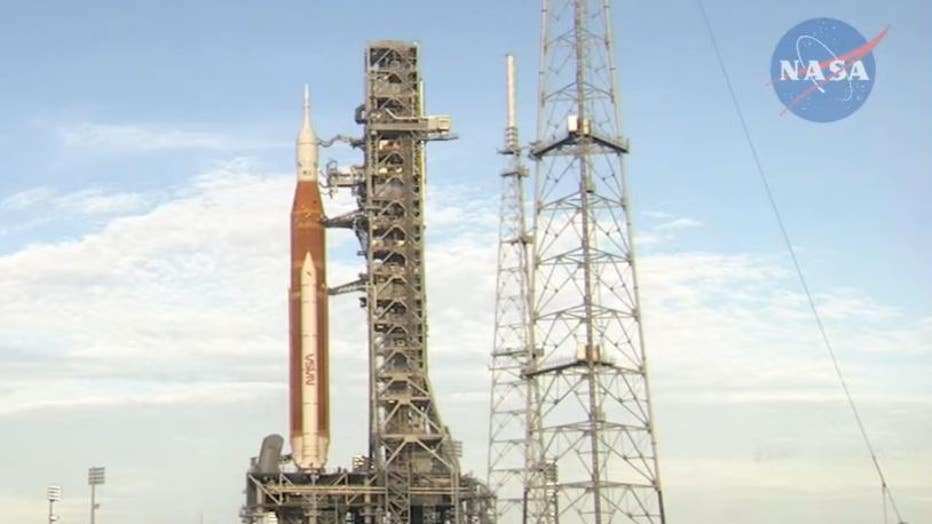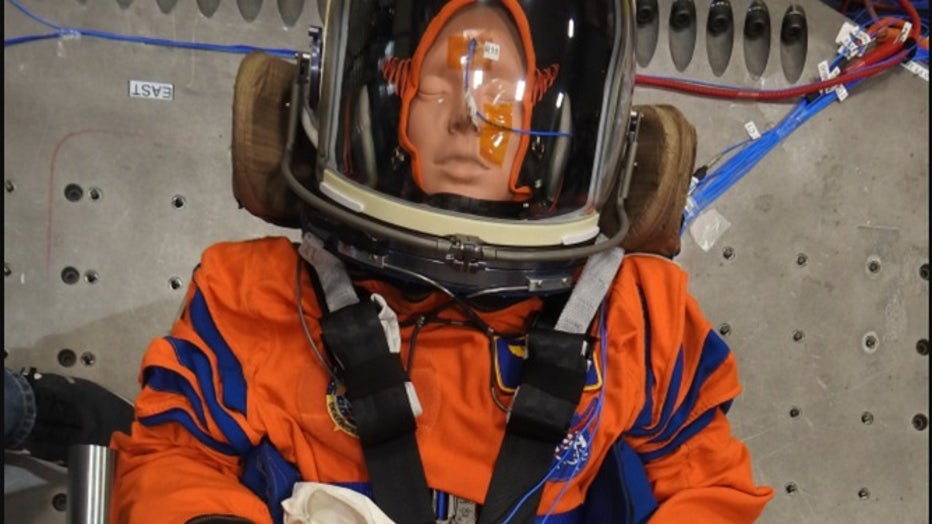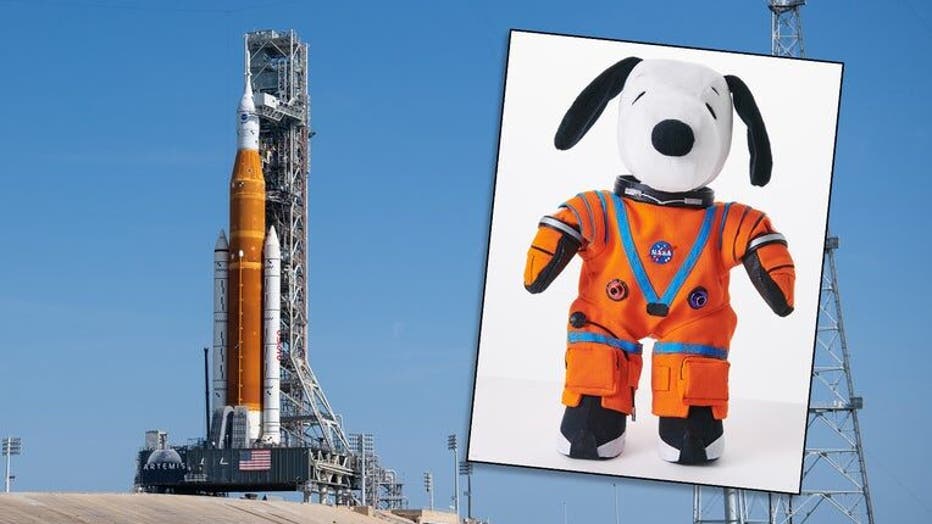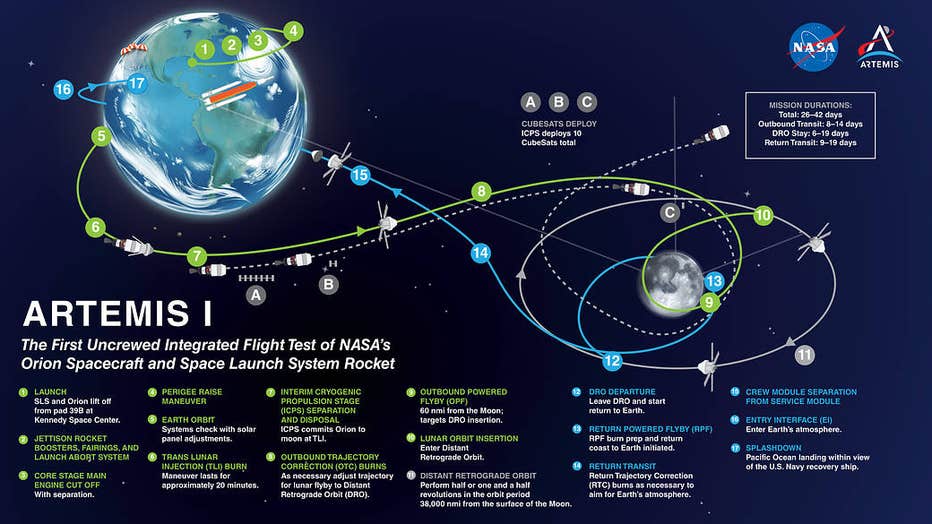Artemis I launch scrubbed for second time over hydrogen fuel leak; new launch weeks away

Artemis I launch delayed until mid-September at the earliest
NASA officials scrubbed the launch of the Artemis l mission on Saturday after attempts to fix a hydrogen fuel leak were unsuccessful.
KENNEDY SPACE CENTER, Fla. - NASA officials scrubbed the launch of the Artemis l mission on Saturday after attempts to fix a hydrogen fuel leak were unsuccessful.
The Artemis I team said the launch will be delayed by several weeks until late September or mid-October, and the rocket will have to return to the Vehicle Assembly Building.
Hundreds of thousands of people gathered on Florida's Space Coast with fingers crossed hoping the launch would go off without a hitch on its journey around the moon. The first attempt on Monday was scrubbed due to technical issues.
At 11:17 a.m., NASA officials decided to postpone Saturday's launch after teams attempted to fix an issue related to a leak in the hardware transferring fuel into the rocket, but were unable to.
The 2-hour launch window for the second attempt of the Space System Rocket and Orion Spacecraft was expected to open at 2:17 p.m. ET. The next opportunities are on Monday, Sept. 5 with a 90-minute launch window that opens at 5:12 p.m. ET and Tuesday, Sept. 5 at 6:57 p.m.
Following the scrub of the launch, NASA Administrator Bill Nelson said that the mission will happen "when it's ready."
"We're going to make sure it's right before we put four humans up on the top of it," he said. "This is part of our space program: be ready for the scrubs."
Nelson said the mission management team will meet on Saturday to decide if they will attempt to launch again next week or if Artemis will be rolled back into the Vehicle Assembly Building. If they decide to roll back, the launch wouldn't happen until October at the earliest, Nelson said.
It will be the first test flight of NASA’s Space Launch System (SLS) rocket and the Orion spacecraft and humans will not be aboard. The "passengers" named "Campos," "Helga" and "Zohar" – which are manikins – will be outfitted with sensors to collect crucial information on pressures and radiation levels to improve safety for future spaceflight.

'It's going to be so cool': Adorable Florida girl dresses as rocket for Artemis launch
Around 400,000 people are on Florida's Space Coast to watch the historic launch of Artemis l, including 7-year-old Camilla who dressed up as a rocket for the special day!


Engineers use manikin to conduct testing at Kennedy Space Center. (NASA)
NASA says the manikin named Campos that will ride in Orion’s commander’s seat will also wear a specialized survival suit, similar to what astronauts on future Artemis missions could wear. The other two phantoms will fly with the names "Zohar" and "Helga" and will be devoted to monitoring radiation levels throughout the mission.
When NASA’s Artemis I mission reaches space, there won’t be any astronauts aboard but a familiar face will be floating around the Orion capsule. Snoopy, the famous comic strip beagle, is serving as a "zero-gravity indicator" for the flight.

WHERE WILL ARTEMIS 1 GO?
NASA said the Artemis 1 mission will demonstrate the performance of both Orion and the SLS rocket and test our capabilities to orbit the moon and return to Earth safely. The flight will pave the way for future missions to the lunar vicinity and beyond.
After a thorough review, the agency says if they can minimize the impacts to future astronauts, Artemis II could take humans back to space and the moon by 2025.
The mission is to complete a lunar orbit, traveling a distance of about 280,000 miles from Earth around the moon. After launching from Kennedy Space Center, the SLS will send the Orion spacecraft on a trajectory to orbit the moon.

Artemis l launch: NASA's Artemis l rocket springs hydrogen fuel leak
NASA's Artemis rocket sprang another liquid hydrogen fuel leak Saturday morning ahead of the second launch attempt, but fueling has resumed and the countdown is still on for liftoff this afternoon.
"Once they launch that vehicle and unleash the 8.8 million pounds of thrust. We'll start our journey," explained Judd Frieling, Artemis 1 ascent & entry flight director. After the SLS clears the KSC launch tower, the rocket will roll in a direction to bring Orion to a "heads down position," according to Frieling.
The vehicle will experience maximum dynamic pressure one minute into the flight, the point when the most physical strain is on the rocket.
SLS’s final job will be when the upper stage completes the translunar injection orbit maneuver around 1 hour and 20 minutes into the flight. The 18-minute engine burn will send Orion on its way to the moon.
On the way to the moon, Orion will deploy a handful of CubeSats, said Rick LaBrode, lead Artemis I flight director. The spacecraft will complete a series of trajectory correction burns on the first day in orbit. One of those burns will ensure the spacecraft moves ahead of the rocket's upper stage and the CubeSats eliminating any potential threat.

"We should get to the moon somewhere on the order of two and a half hours before the satellites, and the upper stage do," LaBrode said.
When the spacecraft loops back around to orbit the moon, it will have traveled about 40,000 miles beyond the far side of the moon, which is farther than any human-rated spacecraft has journeyed before. This is known as the distance retrograde orbit or DRO.
Orion will spend about two weeks in orbit before beginning the journey back to Earth. Orion will complete a series of engine burns on the way back to Earth. About a week before it enters Earth’s atmosphere, the spacecraft will complete the most crucial maneuver of the journey home, the return power flyby (RPF) burn.
"That is our most critical burn of the mission. If something happens that one and we don't execute it, then it's a loss of the Orion capsule," LaBrode said. "We have to do that one, but we plan accordingly."
Orion is set to splashdown off the coast of San Diego, where U.S. Navy recovery teams will be waiting.
HOW CAN I WATCH THE ARTEMIS 1 LAUNCH?
In-person: When the launch happens, spectators can to watch the Artemis 1 launch at some of the most popular viewing locations, including Space View Park in Titusville, Jetty Park in Cape Canaveral and along the beaches in Brevard County. For a complete guide to viewing locations, go HERE.
Livestream: FOX 35 will broadcast the launch live on Good Day Orlando and stream the launch live on FOX35Orlando.com and the FOX 35 News app.
FOX Weather contributed to this report.

